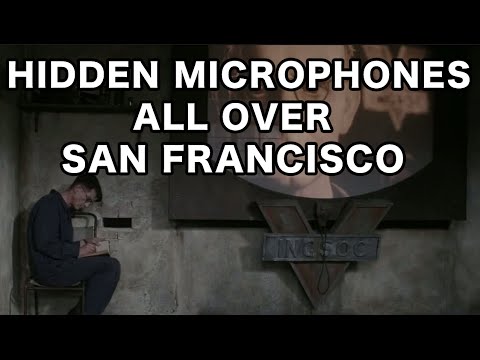In another example of multi-dimensional clash among the Fourth Amendment, privacy, technology, and the surveillance state, hidden microphones that are part of a broad, public clandestine government surveillance program that has been operating around the San Francisco Bay Area have been exposed.
The FBI planted listening devices at bus stops and other public places trying to prove real estate investors in San Mateo and Alameda counties are guilty of bid rigging and fraud. FBI agents were previously caught hiding microphones inside light fixtures and at public spaces outside an Oakland Courthouse, between March 2010 and January 2011.
The apparent goal of the feds was to catch the defendants in their impromptu conversations following court sessions.
At issue is the Fourth Amendment’s guarantee against unwarranted search, which includes electronic “search,” and the concept that one has no expectation of privacy in a public place. The legal argument is that by choosing voluntarily to enter a public space, such a courtroom or bus stop, one gives up one’s Fourth Amendment rights. In the government’s interpretation, their actions are roughly the equivalent of overhearing a conversation on street corner waiting for a light to change.
The lawyer for one of the accused real estate investors will ask the judge to throw out the recordings. “Speaking in a public place does not mean that the individual has no reasonable expectation of privacy. Private communication in a public place qualifies as a protected ‘oral communication’ and therefore may not be intercepted without judicial authorization.”
In addition to the Constitutional issues in the real estate case, the broad use of public surveillance devices also touches on the question of other people who may be swept up alongside the original targets. For example, the FBI’s interpretation means if its microphones inadvertently pick up conversation relating to another alleged crime, they would be free to use that as evidence in court as well.
The use of microphones, coupled with technologies such as voice recognition (to identify a person) and keyword recognition (to identify specific terms of interest electronically) means that what appears to be a one-dimensional listening device can actually function within a web of technology to enable broad-spectrum surveillance of masses of people in public spaces.
Reprinted with permission from WeMeantWell.com.


